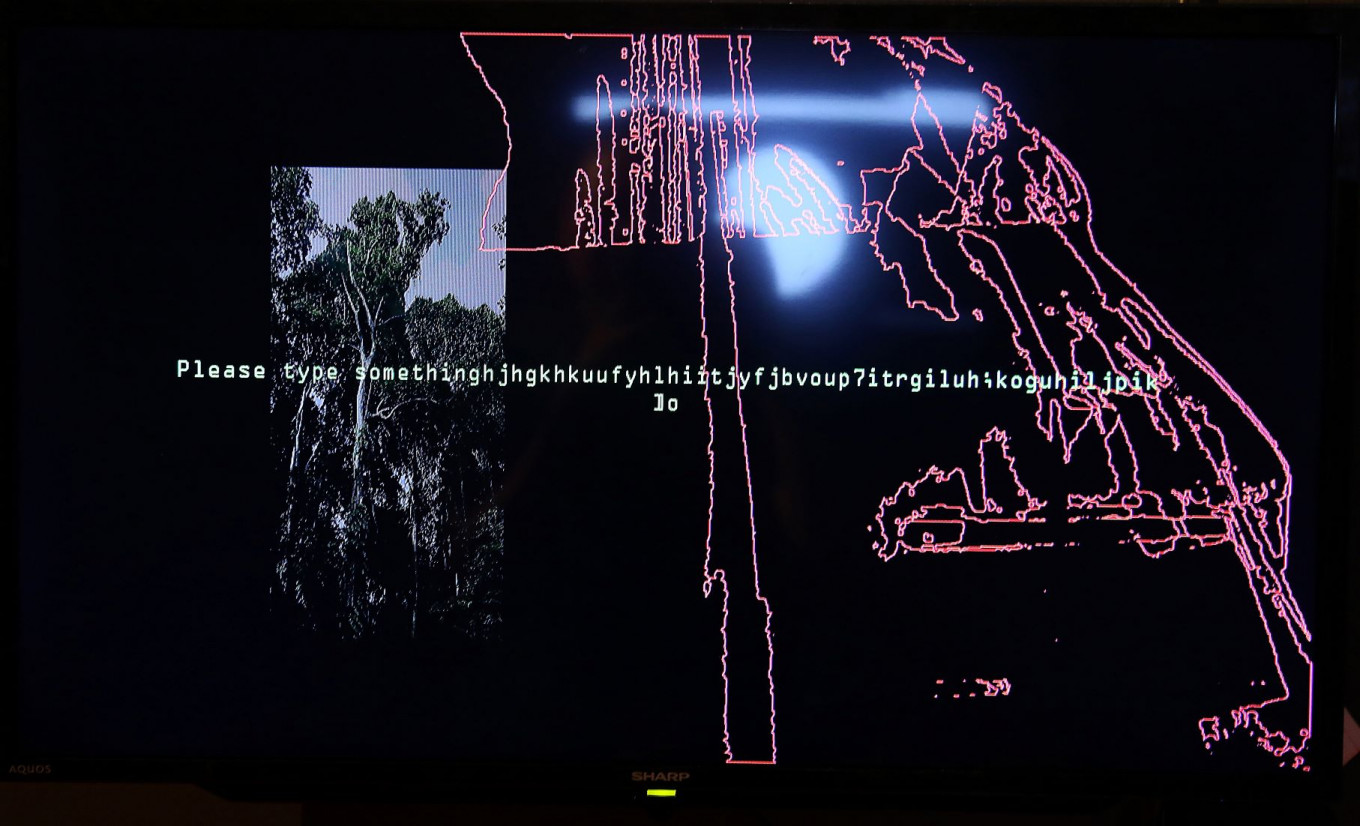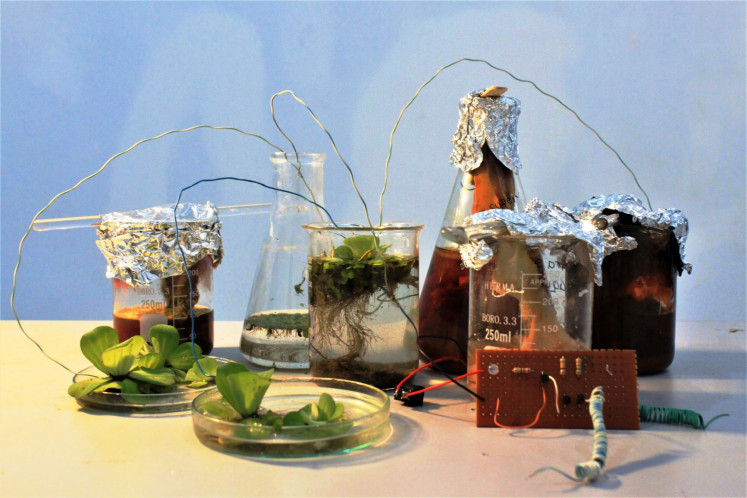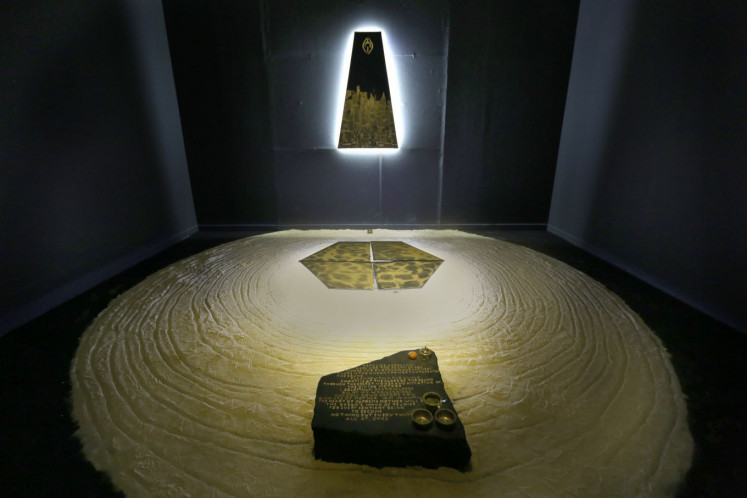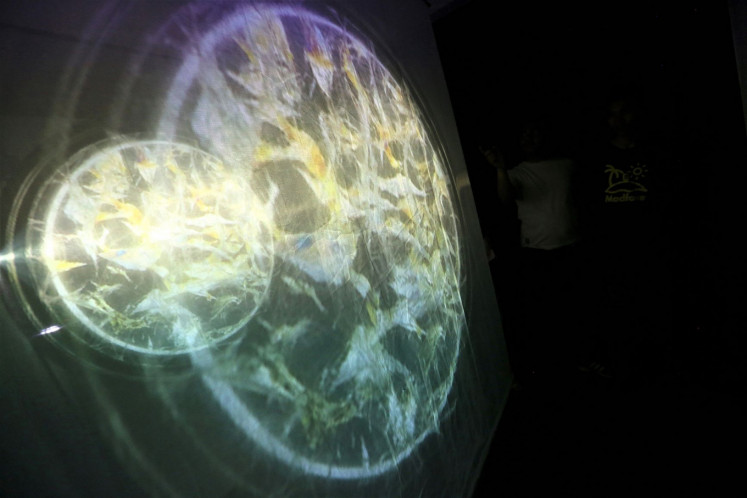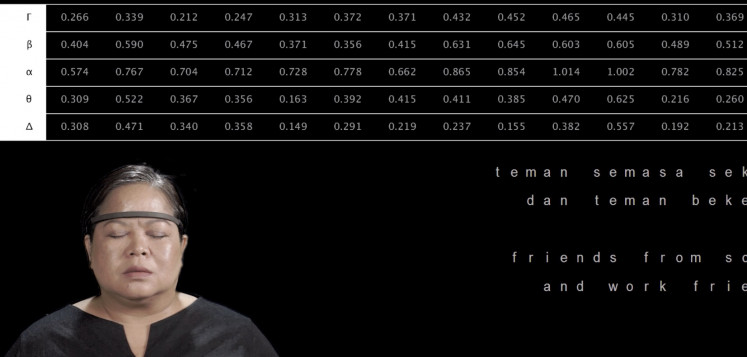Popular Reads
Top Results
Can't find what you're looking for?
View all search resultsPopular Reads
Top Results
Can't find what you're looking for?
View all search resultsBeyond barriers: Women artists evolve through science, technology
Women artists employ science and technology as a channel for their creative imagination.
Change text size
Gift Premium Articles
to Anyone
W
omen millennial artists in Indonesia are entering the domain of science and technology with confidence and a whisk of female energy, breaking through the long-held assumption that scitech is a man’s world.
This was particularly evident at the recent international media art festivals “Instrumenta #2 Machine/Magic” and “Wave of Tomorrow”, in which they took part with their male counterparts.
Some of these young women artists displayed their artwork along such greats as the famous Cyprus-born, Australia-based performance artist Stelarc, whose works focus heavily on extending human capabilities, while others mingled in all-women shows such as “Into the Future”, which featured the works of 21 artists.
'A Perfect Marriage' by Irene Agrivina (Courtesy of Irene Agrivina/-)
Of early note is Irene Agrivina who, besides cofounding the XXLab women's collective that produces fashion and electricity from tofu residue, shines individually with works that focus on the intimate symbiotic relationship between Azolla, a tiny aquatic fern, and the filamentous, microscopic blue-green alga Anabaena, which she called A Perfect Marriage.
Irene also applied a biological process aided by open-source software and hardware to convert porridge into cellulose. Combining this with several bacterial species, including vaginal flora, to produce women's underwear that protects the female genital tract against harmful pollutants.
Different and more abstract are the works of Farhanaz Rupaidha, who creates video installations and algorithmic/generative art through channel amalgamation to express her concerns about the future of human existence.
Farhanaz created Ground for “Instrumenta #2”, through which she lays bare the fact that advanced digital technology has merely shifted data to become just a part of the data stored on various devices.
She also exhibited the interactive piece titled Re-imagining Tribhuwana in “Wave of Tomorrow”, derived from researching the history of the Majapahit era. Farhanaz was surprised to learn that, aside from the oft-mentioned King Hayam Wuruk, another prominent figure of the empire was Queen Tribhuwana, who undertook expansive journeys from Aceh to Bali.
Using three interactive panels, Farhanaz illustrates the queen's daring expeditions, the figure representing the queen sliding like a phantom across maps of the archipelago to trace her journey.
Starting from the very personal, Monica Hapsari sought her inner self by exploring religious teachings, including ancient beliefs, folklore and mysticism.
She finally found her way at a Himalayan Buddhist temple, where she had an auditory experience that ancient teachings believed to be the first human sense of sound.
From this basis she explored Kimatika (cymatics), a study of vibrational phenomena and frequencies that are thought to have psychological and spiritual effects on a person, and which is sometimes referred to as "scientific sorcery".
During her research, Monica found evidence of the phenomenon in Buddhist chants, Islamic zikir, Christian litanies and the like.
She expresses her findings in the “Instrumenta” exhibition with Kechari, a sound installation designed as a kind of cymatic machine. Made of steel slabs arranged in a hexagonal shape on the floor, the machine forms part of a mandala made of yellow desert sand.
By sprinkling the yellow sand, visitors are able to evoke the sound waves and frequencies of a recording of two of the oldest musical instruments: the human uvula and vocal cords.
'Multiverse' by Nindya Nareswari and Maulana Ahmad (Courtesy of Nindya Naresware and Maulana Ahmad/.)Another engaging work is Multiverse, created by Berlin-based lighting designer and artist Nindya Nareswari and Bandung-based designer Maulana Ahmad, who explore the heights of human imagination through a portal that connects our world with imagined parallel universes, presented as a projection of abstract moving images intended to conjure up an imaginary, utopian world.
The germination of the artwork stems from Nindya’s experiments with light.
“I wanted to capture the polarity of light through a special filter,” she explained.
Using several kinds of plastic, she found that each type of plastic produced a unique color when viewed through the filter, while different angles produced a variety of colors.
In a future project, she imagines connecting experiential lighting with individual human emotions, infused with quality of life as an addition, particularly when the sensor is planted in the human body.
Meanwhile, Natasha Tontey continues her speculations on a future in which humans will no longer be the center of life.
In her From Pest to Power video installation and performance in 2019, which recently received an award, she declared that the cockroach – the only species to survive the Earth's many extinction events and epochal transformations – was the key to environmental sustainability.
She is now exploring stones as yet another key to sustaining life into the future for her upcoming video for Amsterdam's Other Futures Festival in April 2020.
“Stones existed before anything else on earth, and has an interiority equal to other living creatures,” says Natasha.
'If We Were XYZ' by Melati Suryodarmo (Courtesy of Melati Suryodarmo/-)How women artists will evolve alongside technological advancements can only be imagined at this stage. But it is telling that even the celebrated durational performance artist Melati Suryodarmo recently looked to technology in devising her "Sleep Laboratory" to explore the subconscious during sleep.
The Sleep Laboratory documented her and others' dreams through complex audio recordings that also measured brainwaves, which she interpreted by drawing on Javanese mysticism to determine the colors of each dream.
Melati, whose latest exhibition “Why Let the Chicken Run” just opened at Museum MACAN in Jakarta, collaborated with technologist Antonius Oki Wiriadjaja to decipher the lab's data. She then turned the dreamscapes into the 3-
hour performance If We Were XYZ, which was presented in October 2019 at the Asia Society Museum in New York. (ste)

